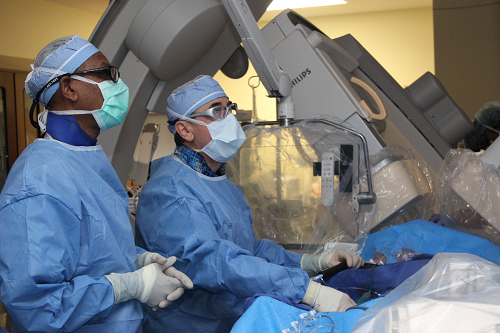Author: Erin Thomson
If you are experiencing episodes of a racing heart or extreme fluttering, you could have a serious condition called atrial fibrillation, which is often referred to as AFib.

Atrial fibrillation is the most common type of treated heart arrhythmia. An arrhythmia is when the heart beats too slowly, too fast, or in an irregular way. When a person has AFib, the normal beating in the upper chambers of the heart is irregular, and blood doesn’t flow as well as it should from the atria to the lower chambers of the heart. AFib can happen in brief episodes, or it may be a permanent condition.
AFib can lead to blood clots, stroke, heart failure and other heart-related complications. At least 2.7 million Americans are living with AFib. According to the American Heart Association, anyone from children to adults, can develop atrial fibrillation. The chances of getting AFib increases with age. With so many people living longer, medical researchers predict the number of AFib cases will rise dramatically over the next few years. Despite the fact that AFib increases the risks of heart-related death and stroke, many patients do not take it seriously including its potentially fatal consequences if it is not treated.
Typically, people who have one or more of the following conditions are at higher risk for AFib:
- Advanced age
- High blood pressure
- Underlying heart disease
- Drinking alcohol
- Family history
- Sleep apnea
- Athletes- can be triggered by a rapid heart rate
- Other chronic conditions such as thyroid problems (specifically hyperthyroidism), diabetes, asthma, and other chronic medical problems
Treatment for AFib involves preventing blood clots and restoring your normal heart rate and rhythm. Medications such as blood thinners, beta-blockers, calcium channel blockers, sodium channel blockers, and potassium channel blockers are the most common.
“In the case that medication doesn’t work, ablation can be done,” said Abdul Alawwa, MD, cardiac electrophysiologist at McLaren Flint. “This is done through a catheter using different types of radiofrequency energy. The two options are either heat or extreme cold (cryoablation) to destroy a few cells in your heart that are sending out the signals that cause the abnormal rhythm. This returns the heartbeat to a normal pattern.”
There have also been advancements in other treatments such as pacemaker technology. Micra is a single-chamber pacemaker that is about the size of a vitamin and can be implanted directly into the heart, eliminating the need for the leads to also be implanted.
“The Micra is a minimally invasive procedure that allows us to implant the pacemaker through a catheter in the leg through a very small incision,” said Madar Abed, MD, cardiac electrophysiologist at McLaren Flint. “This is a great option for patients since minimally invasive procedures avoid complications such as infections.”
For patients with AFib who cannot tolerate blood thinners to prevent stroke, an alternative treatment option is the WATCHMAN device. It is placed into a part of the heart called the left atrial appendage (LAA). The device is suitable specifically for those with atrial fibrillation, which is the leading cause of strokes in the United States and around the world.
“Ninety percent of stroke-causing blood clots that come from the heart and can cause strokes are formed in the LAA and AFib increases stroke by 500 percent,” said Mustafa Hassan, MD, cardiac electrophysiologist and cardiologist at McLaren Flint. “The WATCHMAN permanently closes off this part of the heart to keep those blood clots from escaping.”
A doctor guides the WATCHMAN implant into the patient’s heart through a catheter inserted through a vein in the upper leg. It does not require open heart surgery.
To learn more about the comprehensive heart and vascular services offered at McLaren Flint, visit mclaren.org/flintheart.